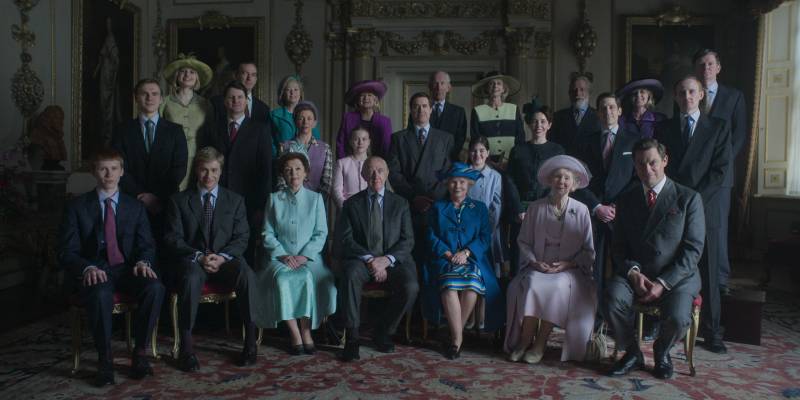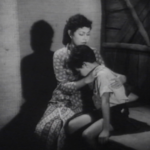Talking Head
1981 - Film & Video (Film & Video)
2 min 27
Michel Auder
Talking Head is a short film in black and white of Auder’s daughter Alexandra, hidden behind a hemp plant, playing with a plastic wrapper and babbling in an imaginative way. The viewer is uncertain whether Alexandra knows she is being filmed but given that Auder was constantly filming she was probably oblivious to it. Her statements make little sense to the outsider : ‘The thing never came back again. It wasn’t the same thing. That thing. Was nice.’ But to her it seems to represent some imaginative narrative connected to the peeling back of the plastic wrapper. The viewer of the film feels as though he has been admitted to her innermost mind, the unconscious. The informal documentary nature of Auder’s films has had wide repercussions in terms of contemporary film making. This kind of low-tech practice informs the work of such artists as Steve McQueen and Gillian Wearing and ran parallel to the fly on the wall practices of documentary filmmakers in the 1970s such as Ken Loach. The acquisition of works by Auder provides a reference point for a number of works in the Kadist collection (Laumann, McAlpine, Menick etc).
Michel Auder was born in 1945 in Soissons, France. He lives and works in Brooklyn.
Colors:
Related works sharing similar palette

© » KADIST
Martin Creed
2003This photograph of Martin Creed himself was used as the invitation card for a fundraising auction of works on paper at Christie’s South Kensington in support of Camden Arts Centre’s first year in a refurbished building in 2005...

© » KQED
‘The Crown’ Ends as Pensive Meditation on the Most Private Public Family on Earth | KQED Skip to Nav Skip to Main Skip to Footer The Do List ‘The Crown’ Ends as Pensive Meditation on the Most Private Public Family on Earth Listen Eric Deggans Dec 14 Save Article Save Article Failed to save article Please try again Facebook Share-FB Twitter Share-Twitter Email Share-Email Copy Link Copy Link A ‘Crown’ recreation of a royal family portrait photo...

© » ARTS EQUATOR
Organizers decry last-minute cancelation of Hanoi EDM festival (via Tuoi Tre News) | ArtsEquator Thinking and Talking about Arts and Culture in Southeast Asia Articles November 27, 2018 An EDM (electronic dance music) festival scheduled to take place just outside Hanoi from November 23 to 25 was asked to cancel only hours before its opening, despite sold tickets and foreign and local artists and volunteers already heading to the venue...

© » KADIST
Wong Kit Yi
2017Artist Wong Kit Yi’s A River in the Freezer combines directed and found footage to meditate upon glacial memory, cryogenics, and frozen fiction...

© » ARTS EQUATOR
Celebrating the monstrous other: "Anak Pontianak" and "Nobody" at LumiNation | ArtsEquator Thinking and Talking about Arts and Culture in Southeast Asia Articles Courtesy of The Filmic Eye August 5, 2019 By ila (1,100 words, 6-minute read) The year is 2049: two hundred years since the Pontianak first appeared in writing, marked insignificantly in Hikayat Abdullah as residues of superstitious and foolish beliefs of the Chinese and Malays that have persisted with time...

© » KADIST
Caroline Monnet, Mobilize A screening program followed by the artist in with conversation with Adam Piron, Assistant Curator for Film at LACMA Montreal-based artist Caroline Monnet explores Indigenous identity, bicultural living, and complex cultural histories through photography, sculpture, film, video, and installation...

© » KADIST
Werner Herzog
2012Commissioned for the 2012 Whitney Biennial, Hearsay of the Soul (2012) is Werner Herzog’s ode to the landscape paintings of the 17th-century Dutch artist Hercules Segers...

© » KADIST
Sabelo Mlangeni
2019The Royal House of Allure is a name of a safe house on mainland Lagos where members of the queer community in need of boarding, due to various circumstances, live together...

© » HYPERALLERGIC
Archaeologists Find Evidence of Hallucinogenic Drug in Ancient Rome Skip to content A bust of Emperor Trajan surrounded by black henbane seends and flowers and a femur discovered by archaeologists (edit Valentina Di Liscia/ Hyperallergic ) Two new archaeological finds suggest Roman subjects at the northern edge of the ancient empire used a hallucinogenic and poisonous plant called black henbane, the effects of which were described by Greek philosopher Plutarch as “not so properly called drunkenness” but rather “alienation of mind or madness.” Dutch zooarchaeologists Maaike Groot and Martijn van Haasteren and archaeobotanist Laura I...

© » KADIST
Goldin+Senneby
In Fiction on Auction , the site of the auction is used to stage a fiction where the right to appear as character in Looking for Headless is offered to the highest bidder: the name of the successful biddder as registered for the auction will form the name or identity of the character appearing in the novel...









